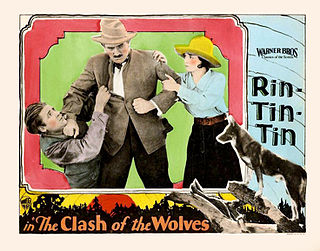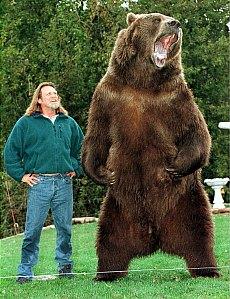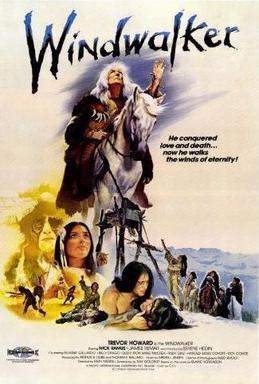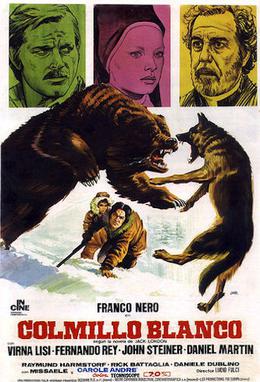
Klaus Maria Brandauer is an Austrian actor and director. He is also a professor at the Max Reinhardt Seminar.

Archibald Stansfeld Belaney, commonly known as Grey Owl, was a popular writer, public speaker and conservationist. Born an Englishman, in the latter years of his life he passed as half-Indian, claiming he was the son of a Scottish man and an Apache woman. With books, articles and public appearances promoting wilderness conservation, he achieved fame in the 1930s. Shortly after his death in 1938, his real identity as the Englishman Archie Belaney was exposed. He has been identified as one of the first pretendians in Canada.

The Call of the Wild is a short adventure novel by Jack London, published in 1903 and set in Yukon, Canada, during the 1890s Klondike Gold Rush, when strong sled dogs were in high demand. The central character of the novel is a dog named Buck. The story opens at a ranch in Santa Clara Valley, California, when Buck is stolen from his home and sold into service as a sled dog in Alaska. He becomes progressively more primitive and wild in the harsh environment, where he is forced to fight to survive and dominate other dogs. By the end, he sheds the veneer of civilization, and relies on primordial instinct and learned experience to emerge as a leader in the wild.

A wolfdog is a canine produced by the mating of a domestic dog with a gray wolf, eastern wolf, red wolf, or Ethiopian wolf to produce a hybrid.

White Fang is a novel by American author Jack London (1876–1916) — and the name of the book's eponymous character, a wild wolfdog. First serialized in Outing magazine between May and October 1906, it was published in book form in October 1906. The story details White Fang's journey to domestication in Yukon Territory and the Northwest Territories during the 1890s Klondike Gold Rush. It is a companion novel to London's best-known work, The Call of the Wild (1903), which is about a kidnapped, domesticated dog embracing his wild ancestry to survive and thrive in the wild.
Rodney Arnold Grant is a Native American (Omaha) actor. He is best known for his role as "Wind In His Hair" in the 1990 film Dances with Wolves.

The Clash of the Wolves is a 1925 American silent Western film produced and distributed by Warner Bros. Directed by Noel M. Smith, the film stars canine actor Rin Tin Tin, Charles Farrell and June Marlowe. It was filmed on location in Chatsworth, California, and at what would later become the Joshua Tree National Park. It was transferred onto 16mm film by Associated Artists Productions in the 1950s and shown on television. A 35mm print of the film was discovered in South Africa and restored in 2003. In 2004, The Clash of the Wolves was deemed "culturally, historically, or aesthetically significant" by the United States Library of Congress and selected for preservation in the National Film Registry.

Bart the Bear was a male Kodiak bear best known for his numerous appearances in films, including The Bear, White Fang, Legends of the Fall, and The Edge. He was trained by animal trainers Doug and Lynne Seus of Wasatch Rocky Mountain Wildlife, Inc., in Heber City, Utah.
The Giant of Thunder Mountain is a 1991 drama film starring Richard Kiel and Noley Thornton. Bart the Bear also appeared in the movie. The screenplay was jointly written by Richard Kiel, Chrystle Fiedler, and Tony Lozito. It was directed by James W. Roberson.

White Fang 2: Myth of the White Wolf is a 1994 American Northern adventure film directed by Ken Olin and starring Scott Bairstow, Alfred Molina, and Geoffrey Lewis. Based on characters created by Jack London, it is a sequel to the 1991 White Fang. Filming entirely took place in Aspen, Colorado as well as British Columbia, Canada's Metro Vancouver region. Released in theaters by Walt Disney Pictures on April 14, 1994, it was later released on VHS on October 19, 1994, by Walt Disney Home Video.

Windwalker is a 1981 Western film directed by Kieth Merrill and written by Ray Goldrup, based on a novel by Blaine M. Yorgason. It stars Trevor Howard and Nick Ramus.

The Jungle Book: Mowgli's Story is a 1998 American adventure film directed by Nick Marck, produced by Mark H. Orvitz and written by José Rivera and Jim Herzfeld. It is the third film adaptation by The Walt Disney Company of the Mowgli stories from The Jungle Book (1894) by Rudyard Kipling. It stars Brandon Baker, and features the voice work of Brian Doyle-Murray, Eartha Kitt, Clancy Brown, Peri Gilpin, and Sherman Howard.
The Legend of White Fang is an animated television series based on the 1906 novel White Fang by Jack London. The show focuses on the main dog protagonist and a young human companion, 12-year-old female Wendy Scott, in the place of the novel's male trail guide, Weedon Scott. Spanning 26 episodes for one season.

White Fang is a 1973 Italian Northern adventure film directed by Lucio Fulci and produced by Harry Alan Towers. The screenplay by Roberto Gianviti was based on Jack London's 1906 novel White Fang. The film, starring Franco Nero, Fernando Rey and Virna Lisi, gained great commercial success and generated an official and several unofficial sequels.

Challenge to White Fang is a 1974 Italian Northern adventure film directed by Lucio Fulci. It is a sequel to Fulci's White Fang (1973), as part of a trend inspired by Call of the Wild (1972), which was a surprise hit in Italy. Two German productions in this trend were Hellhounds of Alaska and Cry of the Black Wolves, both directed by Harald Reinl.
Jed was a Pacific Northwestern American animal actor, known for his roles in the movies White Fang (1991), White Fang 2: Myth of the White Wolf (1994), The Journey of Natty Gann (1985), and The Thing (1982). He was born in 1977 and died in June 1995. He was a Vancouver Island wolf-Alaskan Malamute hybrid.

Flight of the White Wolf is a 1990 anime film directed by Yosei Maeda.

White Fang is a 2018 animated film directed by Alexandre Espigares. Based on the 1906 book White Fang by Jack London, the film features the voices of Nick Offerman, Rashida Jones, Paul Giamatti, and Eddie Spears as natives of Alaska who, at different times, come to know White Fang, a free spirited and at times violent wolfdog who eventually bonds with Offerman's character, a gentle master named Weedon Scott. The film also features Dave Boat, Daniel Hagen, and Stephen Kramer Glickman in the original English version, and Virginie Efira, Raphaël Personnaz, and Dominique Pinon in the French dub.

White Fang is a 1925 American silent Western film directed by Laurence Trimble and featuring Theodore von Eltz, Ruth Dwyer, and Matthew Betz. It was produced by FBO Pictures as a starring vehicle for Strongheart, an Alsatian who appeared in a number of films during the decade. It is based on the 1906 novel White Fang by Jack London.















